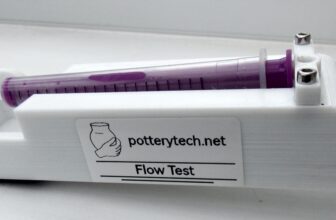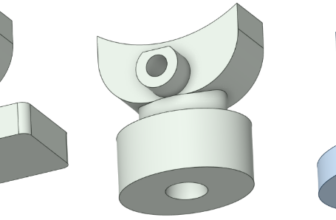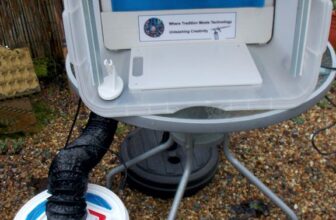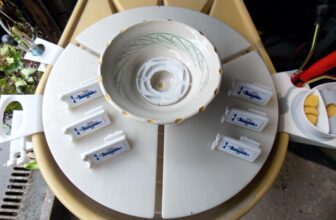
Recently, I realized that I need a bigger banding wheel-whirler because my current one has a diameter of only 8 inches. These tools are essential in any hobbyist’s workshop, and they come in various options at different price points, with some made from materials like cast iron, aluminum, or plastic. My own is made of aluminum, and I always suggest choosing a metal option since they tend to be more durable, last longer, and can hold heavier pots, providing years of dependable use.
A whirler has a bearing that allows the top plate to rotate smoothly. It mainly consists of two discs connected by a shaft and a bearing. When I’m designing on my pots and need to carve a pattern or use decorative techniques, I depend on my banding wheel-whirler for precision. Occasionally, I may use my throwing wheel, but I favor the banding wheel-whirler because it sits at a comfortable tabletop height. I place my ceramic piece on the banding wheel, and at times, I find myself wanting it to be larger. It can be quite frustrating when the pot or wooden bat moves slightly on the banding wheel, especially if accurate centering is needed for the design. To address this, I considered creating 3D printed locking locating brackets.
I design the brackets using my preferred CAD software, DesignSpark Mechanical, and then 3D print them with PETG filament. I select a wooden bat that is much larger than my banding wheel and align and center it, using circles as guides to position the banding wheel. Next, I flip the banding wheel upside down and attach my 3D printed locating brackets to the bottom of the banding wheel-whirler, securing them to the wooden bat. These brackets keep the bats from slipping off the banding wheel during use, ensuring the bat stays firmly in place. They also allow for easy removal from the banding wheel. This illustrates another way that 3D printing aids in crafting customized and flexible tools. Regardless of your budget, many types of banding wheel-whirlers are available on the market. However, I recommend choosing either cast iron or aluminum, as they are typically more resilient for prolonged use. Currently, I am using the Aluminum Hobby Whirler along with three wooden bats of varying sizes and my 3D printed locking locating brackets.

3D printed locating locking bracket for a Banding wheel-whirler
designed by Michael G Parry-Thomas







